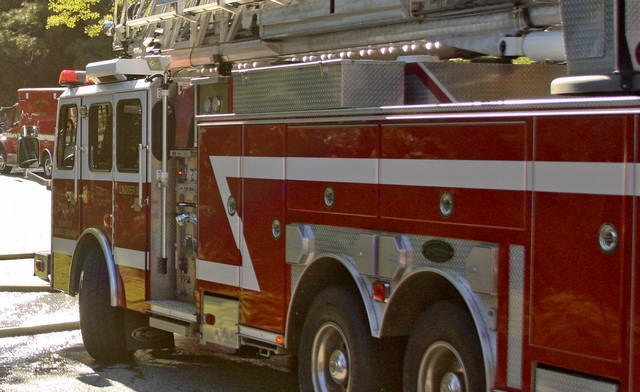Editorial: Firefighter support is priceless
Putting out a fire isn’t cheap.
According to the International Association of Fire Chiefs, that iconic helmet is $350. Goggles are $75. The hood that goes under the hat is $45, and that’s the cheapest thing they wear. The jacket and pants are $1,800, gloves are $75 and boots are $450. All of that pales next to the breathing apparatus that comes in at $6,500.
Altogether, that’s about $9,400, and it doesn’t count the tools a firefighter uses, like an ax or a flashlight or a radio.
That’s for just one person, and it’s not exactly an area where you want to cut corners. That equipment isn’t just the difference between life and death for the person who wears it. It’s life and death for the people who need to be saved, too.
Then there’s a truck, which might cost $100,000 for a small brush truck or $500,000 for a pumper or even $1 million for a completely outfitted aerial truck, the kind that might be needed to fight big fires in tall buildings.
None of it is cheap.
That is why Pennsylvania Auditor General Eugene DePasquale’s recommendation to loosen the ropes that tie up state money to help fire departments has merit.
State aid money from a tax on fire insurance premiums from out-of-state companies generated $55 million for more than 2,500 municipalities in 2018. DePasquale says some of the relief associations that receive that money have accumulated large fund balances because of restrictions on how the money can be used.
Local companies have had big balances. In 2016, Monroeville had $2.7 million. In 2017, Greensburg had $3.7 million.
Companies that have those cushions say the rules aren’t that restrictive and the banked funds are there for a reason — like when they need one of those big-ticket trucks.
Both sides can be right. Maybe the restrictions are like the protective gear the firefighters wear, something that insulates them from the heat some companies feel when funds are low.
But others might have needs that aren’t on the state’s approved list of what the funds can provide. They might require a way to grab the state’s attention to ask for a little latitude, a kind of flashing red light to clear the road.
So maybe less regulation isn’t the answer, but a tweak could be — something that could help bring in more firefighters and make sure they have what they need to do a job that is priceless.
Remove the ads from your TribLIVE reading experience but still support the journalists who create the content with TribLIVE Ad-Free.

